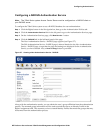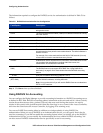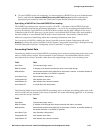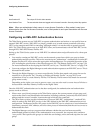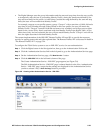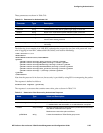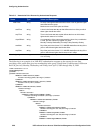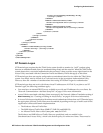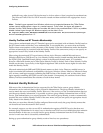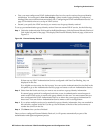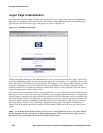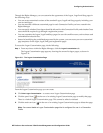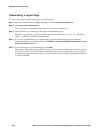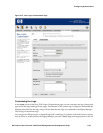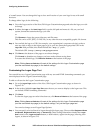Configuring Authentication
<value><string>Monday:Wednesday:Friday
</string></value>
</member>
<member><name>startDate</name>
<value><string>2002-04-01</string></value>
</member>
<member><name>stopDate</name>
<value><string>2002-05-31</string></value>
</member>
</struct></value>
</data>
</array></value>
</member>
</struct><value>
</data>
</array></value>
</member>
<member><name>hashed_string</name>
<value><string> </string></value>
</member>
</struct></value>
</param>
</params>
</methodResponse>
NT Domain Logon
NT Domain logon requires that the 700wl Series system be able to monitor (or “sniff”) packets going
between an unauthenticated client (or reauthenticating client) and the network. When the 700wl Series
system detects that a successful authentication has occurred, it then provides access rights based on the
Access Policy associated with the Connection Profile and Identity Profile that apply to that client.
NT Domain logon does not require configuration as anAuthentication Service within the 700wl Series
system. You simply need to include it as a selected service in the appropriate Authentication Policy.
However, there are a number of considerations when using NT Domain Logon for authentication.
NT Domain logon does not work with clients whose IP addresses are NAT’ed. If you plan to use NT
Domain Logon, the following conditions apply:
• You must have an external DHCP server available to provide real IP addresses for your clients. See
“Network Communication—the Basic Setup Tab” on page 6-19 for more information.
• Access Policies associated with those clients must specify the Network Address Translation setting of
When Necessary (see “Creating or Editing an Access Policy” on page 4-43 for more information).
• In Access Policies associated both with unknown and authenticated clients that use NT Domain logon,
the appropriate Allowed Traffic filters must be enabled, depending on the type of traffic used for the
organization’s Microsoft Domain implementation:
— The Kerberos Allowed Traffic filter
— The SMB Allowed Traffic filters (SMB 137, SMB 138, and SMB 139)
— An Allowed Traffic filter to allow (
dst port 389) for LDAP.
The Kerberos and SMB Allowed Traffic filters are predefined, and are enabled in the
Unauthenticated Access Policy, which is the default policy for unknown clients. These must be
HP ProCurve Secure Access 700wl Series Management and Configuration Guide 5-27



